Howard Maskill9781405131421, 140513142X
Such an investigation will lead to an understanding of which bonds are broken, which are made, and the order in which these processes happen. This information and knowledge of the associated kinetic and thermodynamic parameters are central to the development of safe, efficient, and profitable industrial chemical processes, and to extending the synthetic utility of new chemical reactions in chemical and pharmaceutical manufacturing, and academic environments.
Written as a coherent account of the principal methods currently used in mechanistic investigations, at a level accessible to academic researchers and graduate chemists in industry, the book is highly practical in approach. The contributing authors, an international group of expert practitioners of the techniques covered, illustrate their contributions by examples from their own research and from the relevant wider chemical literature. The book covers basic aspects such as product analysis, kinetics, catalysis, and investigation of reactive intermediates. It also includes material on significant recent developments, e.g. computational chemistry, calorimetry, and electrochemistry, in addition to topics of high current industrial relevance, e.g. reactions in multiphase systems, and synthetically useful reactions involving free radicals and catalysis by organometallic compounds.
Table of contents :
The Investigation of Organic Reactions and Their Mechanisms
……Page 1
Contents……Page 3
Contributors……Page 12
Foreword……Page 14
Preface……Page 17
1.2 The nature of mechanism and reactivity in organic chemistry……Page 19
1.3.1 Product analysis, reaction intermediates and isotopic labelling……Page 20
1.3.1.1 Example: the acid-catalysed decomposition of nitrosohydroxylamines……Page 21
1.3.2 Mechanisms and rate laws……Page 22
1.3.3.1 Example: the acid- and base-catalysed decomposition of nitramide……Page 24
1.3.4 Kinetics in homogeneous solution……Page 25
1.3.4.1 Example: the kinetics of the capture of pyridyl ketenes by n -butylamine……Page 26
1.3.5 Kinetics in multiphase systems……Page 27
1.3.6 Electrochemical and calorimetric methods……Page 28
1.3.7 Reactions involving radical intermediates……Page 30
1.3.8 Catalysed reactions……Page 31
References……Page 34
2.1 Introduction and overview– why study organic reaction mechanisms?……Page 36
2.2.1 Quantitative determination of product yields……Page 39
2.2.2 Product stabilities, and kinetic and thermodynamic control of product formation……Page 41
2.3.1 Stereochemical considerations……Page 43
2.3.2 Use of isotopic labelling……Page 44
2.4 Mechanistic evidence from variations in reaction conditions……Page 45
2.6 Kinetic evidence from monitoring reactions……Page 50
2.6.1 Sampling and analysis for kinetics……Page 51
2.7.1 Product-determining steps in SN1 reactions……Page 52
2.7.2 Selectivities……Page 54
2.7.3 Rate– product correlations……Page 56
Bibliography……Page 61
References……Page 62
3.2.1 Reaction rate, rate law and rate constant……Page 64
3.2.3 Reaction mechanism, elementary step and rate-limiting step……Page 66
3.3 How to obtain the rate equation and rate constant from experimental data……Page 68
3.3.1 Differential method……Page 69
3.3.1.1 Example:reaction between RBr and HO-……Page 70
3.3.2 Method of integration……Page 71
3.3.2.2 Example: decomposition of N2O5 in CCl4……Page 72
3.3.3 Isolation method……Page 74
3.3.3.1 Example: oxidation of methionine by HOCl……Page 75
3.4.1 Rate constants for forward and reverse directions, and equilibrium constants……Page 76
3.5.1 Preliminary studies……Page 77
3.5.2.2 Temperature……Page 78
3.5.2.3 pH……Page 79
3.5.2.4 Solvent……Page 80
3.5.2.5 Ionic strength……Page 81
3.5.2.6 Other experimental aspects……Page 82
3.6.3 Continuous static monitoring……Page 83
3.7.1 Spectrometric methods……Page 84
3.7.1.1 Conventional and slow reactions……Page 85
3.7.1.2 Fast reactions……Page 87
3.7.1.3 Very fast and ultrafast reactions……Page 88
3.7.2 Conductimetry……Page 89
3.7.4 Potentiometry……Page 91
3.7.5 Dilatometry……Page 92
3.7.7 Chromatographic methods……Page 93
References……Page 94
4.1 Introduction……Page 97
4.2.1 Single-step unidirectional reactions……Page 98
4.2.2.1 Consecutive unimolecular (first-order) reactions……Page 99
4.2.2.3 Parallel (competitive) unimolecular (first-order) reactions……Page 101
4.2.3 Complex reaction schemes and approximations……Page 104
4.2.3.1 The steady-state approximation (SSA)……Page 106
4.2.3.3 The rate-determining step approximation……Page 107
4.2.3.4 The steady-state approximation,and solvolysis of alkyl halides and arenesulfonates……Page 108
4.3.1 Chlorination of amino compounds……Page 109
4.3.2 The Aldol reaction……Page 113
4.3.2.1 At low concentrations of aldehyde……Page 114
4.3.2.2 At high concentrations of aldehyde……Page 115
4.3.3 Hydrogen atom transfer from phenols to radicals……Page 116
4.3.4 Oxidation of phenols by Cr(VI)……Page 118
References……Page 121
5.1 Introduction……Page 122
5.2.1 Mass transfer coupled to chemical reaction……Page 123
5.2.1.1 Reaction too slow to occur within the diffusion film……Page 124
5.2.1.2 Reaction fast relative to the film diffusion time……Page 125
5.2.1.3 Interfacial reactions……Page 127
5.2.2 Phase-transfer catalysis (PTC)……Page 128
5.2.3 System complexity and information requirements……Page 130
5.3.1.1 Gas–liquid reactions……Page 131
5.3.1.2 Dispersed liquid–liquid systems……Page 132
5.3.1.3 Liquid–solid reactions in a stirred reactor……Page 133
5.3.2.1 Techniques based on the Lewis cell……Page 134
5.3.2.2 The rotated disc reactor……Page 135
5.3.2.3 Rotated diffusion cell……Page 136
5.3.2.4 Channel flow techniques……Page 137
5.3.2.5 The jet reactor……Page 138
5.3.2.6 Expanding drop methods……Page 139
5.3.2.8 Microelectrode techniques……Page 140
5.4 Information requirements and experimental design……Page 141
5.5 Summary……Page 142
References……Page 143
6.1 What is organic electrochemistry?……Page 145
6.2 The relationship between organic electrochemistry and the chemistry of radical ions and neutral radicals……Page 148
6.3 The use of electrochemical methods for investigating kinetics and mechanisms……Page 149
6.4.1 Two-electrode and three-electrode electrochemical cells……Page 150
6.4.2 Cells for electroanalytical studies……Page 151
6.4.3.1 The working electrode (W)……Page 152
6.4.5 The electronic instrumentation……Page 153
6.5 Some basics……Page 154
6.5.1 Potential and current……Page 155
6.5.2 The electrochemical double layer and the charging current……Page 156
6.5.3 Mass transport and current……Page 157
6.6.2 Mechanisms and rate laws……Page 159
6.7 The response curves for common electroanalytical methods……Page 160
6.7.1 Potential step experiments (chronoamperometry and double potential step chronoamperometry)……Page 161
6.7.2 Potential sweep experiments (linear sweep voltammetry and cyclic voltammetry)……Page 165
6.7.2.1 CV conditions……Page 169
6.7.2.3 Fitting simulated voltammograms to experimental voltammograms……Page 172
6.7.3 Potential sweep experiments with ultramicroelectrodes……Page 173
A.1 The preliminary experiments……Page 177
A.2 Preliminary studies by cyclic voltammetry……Page 178
A.3 Determination of the number of electrons, n (coulometry)……Page 180
A.4 Preparative or semi-preparative electrolysis, identification of products……Page 182
References……Page 183
7.1.1 General remarks……Page 185
7.1.2 Potential energy surfaces, reaction coordinates and transition structures……Page 186
7.1.3 Absolute and relative energies; isodesmic and homodesmotic equations……Page 188
7.2.1 Molecular mechanics……Page 190
7.2.3 Semiempirical methods……Page 191
7.2.4 Hartree–Fock theory……Page 193
7.2.5 Electron-correlation methods……Page 194
7.2.6 Density functional theory……Page 197
7.2.8 Basis sets……Page 199
7.3.1 The ethane rotational barrier and wave function analysis……Page 200
7.3.2 The nonclassical carbocation problem and the inclusion of solvent effects……Page 205
7.4 Matching computed and experimental data……Page 210
7.5 Conclusions and outlook……Page 211
References……Page 212
8.1 Introduction……Page 216
8.2 Investigation of reaction kinetics and mechanisms using calorimetry and infrared spectroscopy……Page 217
8.2.2 Types of reaction calorimeters……Page 218
8.2.2.2 Power-compensation calorimeters……Page 219
8.2.3 Steady-state isothermal heat-flow balance of a general type of reaction calorimeter……Page 220
8.2.4 Infrared and IR-ATR spectroscopy……Page 223
8.2.5.1 Experimental methods for isothermal calorimetric reaction data……Page 224
8.2.5.2 Experimental methods for isothermal infrared reaction data……Page 227
8.3.1 Calorimetric device used in combination with IR-ATR spectroscopy……Page 229
8.3.2.2 Results and discussion……Page 231
8.3.3 Example 2: sequential epoxidation of 2,5-di-tert-butyl- 1,4-benzoquinone……Page 234
8.3.3.2 Results and discussion……Page 235
8.3.4.1 Materials and methods……Page 240
8.3.4.2 Results and discussion……Page 241
8.4 Conclusions and outlook……Page 242
References……Page 243
9.1.1 Potential energy surfaces and profiles……Page 245
9.1.2 From molecular potential energy to rates of reaction……Page 247
9.2.1 Reaction classification……Page 249
9.2.2 Consequences of uncoupled bonding changes……Page 250
9.2.3 Sequences of basic reactions……Page 251
9.3.1 Direct observation……Page 252
9.3.2 Deductions from kinetic behaviour……Page 256
9.3.3 Trapping of intermediates……Page 260
9.3.4 Exploitation of stereochemistry……Page 264
9.3.5 Isotopic substitution in theory……Page 267
9.3.6 Isotopic substitution in practice……Page 270
9.3.7 Linear free energy relationships……Page 274
References……Page 276
10.1.1 Radical intermediates……Page 279
10.1.2 Some initial considerations of radical mechanisms and chapter overview……Page 280
10.2 Initiation……Page 282
10.3 Radical addition to alkenes……Page 284
10.5 Nitroxides……Page 286
10.5.1 Nitroxide-trapping experiments……Page 287
10.5.2 Alkoxyamine dissociation rate constant, kd……Page 288
10.5.3 The persistent radical effect (PRE)……Page 291
10.5.4 Nitroxide-mediated living/controlled radical polymerisations (NMP)……Page 293
10.6 Radical clock reactions……Page 294
10.7 Homolytic aromatic substitution……Page 298
10.8.1 Reductions with samarium di-iodide,SmI2……Page 302
10.8.2 SRN1 substitution……Page 305
Bibliography……Page 309
References……Page 310
11.1.1 Definitions……Page 311
11.2.1 Experimental demonstration……Page 312
11.2.2 Reaction flux and third-order terms……Page 315
11.2.3 Brønsted equations……Page 316
11.2.4.1 Cross-correlation effects……Page 317
11.2.4.2 The diffusion-controlled limit as a criterion of mechanism……Page 319
11.2.5.1 Stepwise proton transfer (trapping)……Page 320
11.2.5.2 Stabilisation of intermediates by proton transfer……Page 322
11.2.5.3 Preassociation……Page 324
11.2.5.5 Push–pull and bifunctional acid–base catalysis……Page 325
11.3.1 Detection of intermediates……Page 326
11.3.2 Non-linear free energy relationships and transient intermediates……Page 328
11.4 Enzyme Catalysis……Page 329
11.4.2 Enzyme assay……Page 330
11.4.3.1 Active-site titration……Page 331
11.4.3.2 Active-site directed irreversible inhibitors……Page 333
11.4.4 Kinetic analysis……Page 334
11.4.5 Reversible inhibitors……Page 335
11.4.6.1 Direct observation……Page 336
11.4.6.2 Structural variation……Page 337
11.4.6.4 Kinetics……Page 338
11.4.6.5 Trapping……Page 339
References……Page 340
12.1.1 The challenges inherent in the investigation of organic reactions catalysed by organometallics……Page 342
12.1.2 Techniques used for the study of organometallic catalysis……Page 344
12.1.3 Choice of examples……Page 345
12.2.1 Background and introduction……Page 346
12.2.2 The 31P{1H}NMR investigation of the Rh-catalysed asymmetric phenylation of cyclohexenone……Page 348
12.2.3 Summary and key outcomes from the mechanistic investigation……Page 351
12.3.1 Background and introduction……Page 352
12.3.2 Kinetic studies employing classical techniques……Page 353
12.3.3 ‘Atom accounting ’through isotopic labelling……Page 356
12.3.4 Observation of pro-catalyst activation processes by NMR spectroscopy……Page 359
12.3.5 Summary and mechanistic conclusions……Page 360
12.4.1 Background and introduction……Page 361
12.4.2 Early mechanistic proposals for the alkene metathesis reaction……Page 362
12.4.3 Disproving the ‘pairwise ’mechanism for metathesis……Page 363
12.4.4 Mechanistic investigation of contemporary metathesis catalysts……Page 366
12.4.5 NMR studies of degenerate ligand exchange in generation I and generation II ruthenium alkylidene pro-catalysts for alkene metathesis……Page 369
12.4.6 Summary and mechanistic conclusions……Page 370
References……Page 371
Index……Page 372
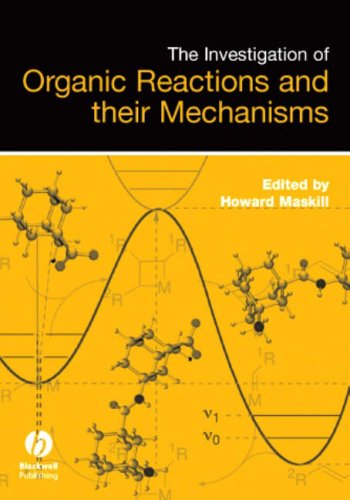
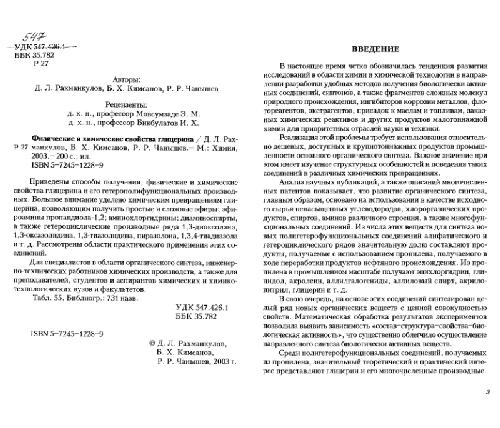
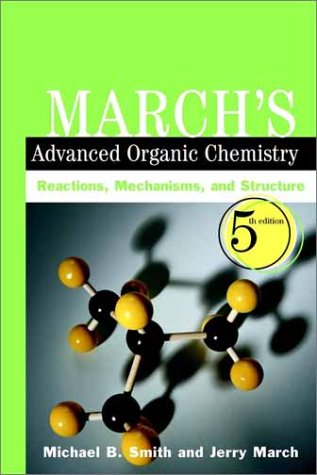

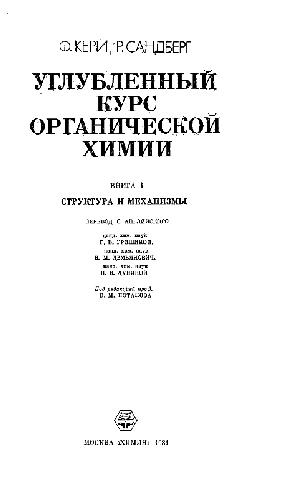
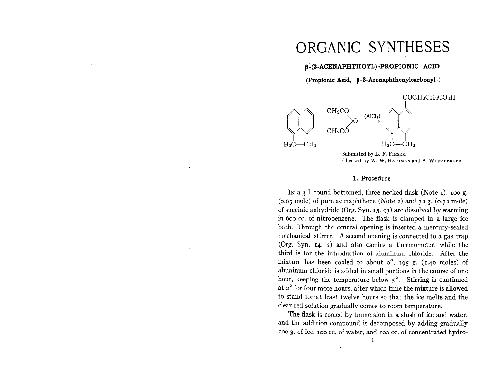
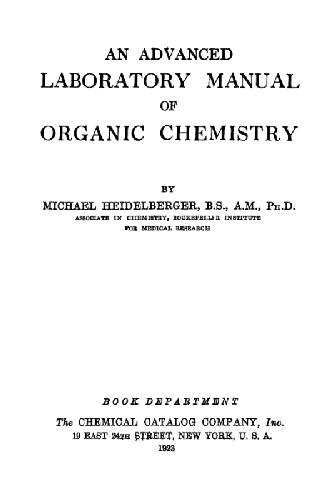
Reviews
There are no reviews yet.